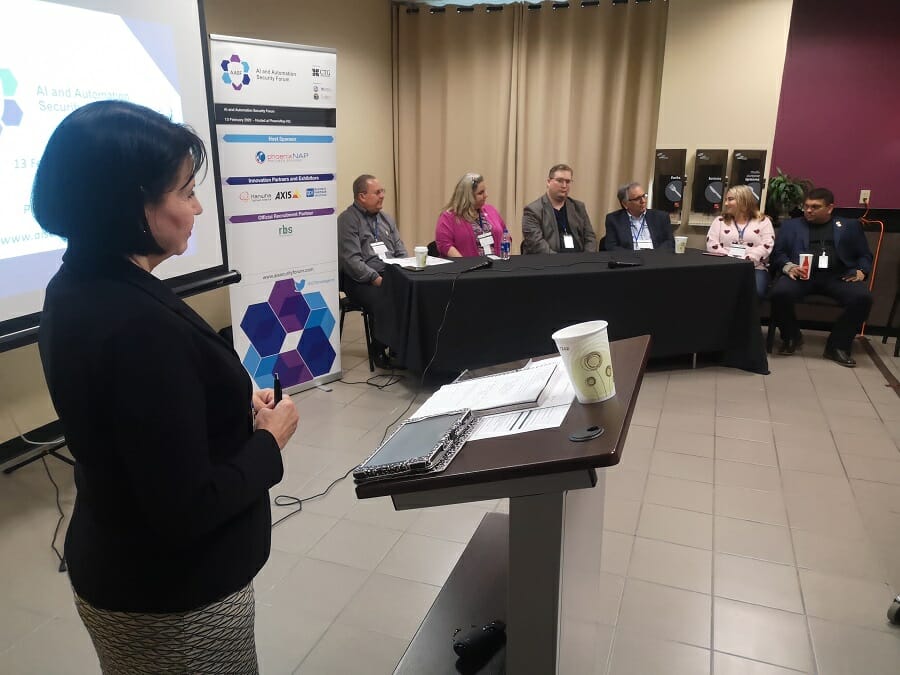How marketing organizations can focus on advancing women in martech
Mentor programs are seen as vital by many women.
The martech community is always touting innovations, which are the lifeblood of both competition and entrepreneurship. But are they innovating with the same zeal when it comes to welcoming women in martech workplaces?
Unfortunately not.
“I started as a programmer in the early 1980s and not much has changed,” said Laura Hemenway, founder and president of Paradigm Solutions, an IT and marketing technology consulting firm based in Scottsdale, Arizona. “I see small improvements here and there, and I would like to say it is all equal and fair in 2020, but it is not. I have worked everywhere from Philadelphia to Phoenix and the male-dominated environment and attitude is prevalent everywhere.”
Breaking down barriers
The barriers for women entering any sector of the technology industry are many, from being the only woman, or one of a few women, in undergraduate courses in college, to a lack of women professors, to the challenge of finding internships in male-dominated companies-— young women are forced to adapt early and often in their careers.
As professionals the trend continues, as male-dominated job interviews give way to male-dominated offices, meetings and conferences. This can lead to lower salaries, being passed over for promotions and fewer professional development opportunities.

Laura Hemenway (far left), leads a panel discussion at the ‘AI and Automation Security Forum’ in Phoenix.
“The women that are in technology today, all of us, need to step up and give back with organizations like Girls in Technology,” said Hemenway. “It is our responsibility to encourage girls and young women and start the change so the future can be different.”
As the CMO for Publicis Sapient, the digital transformation agency, Teresa Barreira embraces her role as an agenda-setter on a large corporate scale, and acknowledges it takes more than talk to solve diversity problems.
“Achieving diversity in the workplace is not about adding technology and tools,” said Barreira. “The primary focus needs to be the mental and emotional posture of our people and education when it comes to tackling issues of diversity in the workplace. Even though tools are a great help, we need organization-wide and leadership-driven commitments.”
Publicis Sapient uses an internal communication network, called Everyone Social, that now supports women’s mentorship communications.
Embracing the opportunity
Hemenway instructs the young professionals that she mentors to make sure their voices are heard. “Young women in technology should gain confidence by not only sitting at the table, but sitting at the middle of the table with your laptop,” said Hemenway. “Take your space and take your place so you can be heard from day one. It takes a lot of courage and confidence, but as long as you stay well-prepared you can do it.”
Hemenway, whose firm has worked with several Fortune 1000 companies, serves as a mentor for young technology professionals at Arizona State University, as well as schoolgirls at an elementary school in Phoenix, focusing on both ends of the academic age spectrum. She said interacting with a woman who is a professional in the technology industry motivates the students. They have a lot of questions about the industry while Hemenway stays transparent and completely honest about the experience of being a woman in the technology industry.
“If a man and a woman with the same credentials walk into the same meeting at the same time, the man gets the ear of the group,” said Hemenway. “I see it all the time. Our future will always depend on mentorship as the foundation and best tool for recruitment.”
What works for women
Internal and industry-led mentor programs are strongly recommended for both academic and corporate settings.
Resources for women’s industry advancement and eliminating career barriers in technology:
- Girls in Technology
- Girls Who Code
- National Center for Women & Information Technology
- Women in Technology International
- Women of Martech
Gender-equal hiring committees and interview panels also lessen new hire barriers and provide for a more equal opportunity for job seekers. Identifying professional development opportunities and making them public to all employees is a vital corporate responsibility, as well as actively promoting and even reimbursing networking events, professional certifications and training.
“To create equity and truly promote diversity, we have to eliminate barriers to entry,” said Barreira. “We need to set targets and define a roadmap to achieve them.”
Contributing authors are invited to create content for MarTech and are chosen for their expertise and contribution to the search community. Our contributors work under the oversight of the editorial staff and contributions are checked for quality and relevance to our readers. MarTech is owned by Semrush. Contributor was not asked to make any direct or indirect mentions of Semrush. The opinions they express are their own.
Related stories